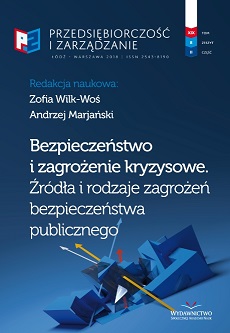Współpraca cywilno-wojskowa w NATO – istota, cele i podstawowe funkcje
Civil-military Cooperation in NATO – Essence, Goals and Basic Functions
Author(s): Zbigniew GroszekSubject(s): Civil Society, International relations/trade, Security and defense, Military policy
Published by: Społeczna Akademia Nauk
Keywords: Organization of the North Atlantic Treaty (NATO); civilian environment; civilmilitary cooperation (CIMIC); governmental and nongovernmental organization;
Summary/Abstract: The North Atlantic Treaty Organisation (NATO) as an alliance of countries guaranteeing mutual security, was, is and probably will be a very important player (subject) in shaping and creating the international security environment for a long time. During the Cold War confrontation the Alliance successfully operated as a security system of Western states, combining strength and deterrence and collective defence. After 1991, the nature and scope of activities of the Alliance for international security underwent radical changes. In addition to the continuation of tasks related to the collective defence, NATO is actively involved in crisis response operations in many regions of the world, contributing significantly to the stabilization of the international security environment. NATO crisis response operations carried out outside the Member States, in areas lacking fully operational institutions and effective infrastructure, pose more complex challenges. Therefore, in today’s security environment for the operational success, it is necessary to closely cooperate with all the bodies involved in the implementation of tasks in the area of operation to help local authorities to rebuild the social structure and restore the normal living conditions of local people. Therefore, the basic question arises: what is civil-military cooperation (CIMIC) in NATO, what are the legal bases for the functioning of its organs, and what are its goals and functions? This article is an attempt to answer this rather complex question, based on the analysis of available publications and normative documents as well as own reflections on this subject.
Journal: Przedsiębiorczość i Zarządzanie
- Issue Year: 19/2018
- Issue No: 8.2
- Page Range: 219-232
- Page Count: 14
- Language: Polish

